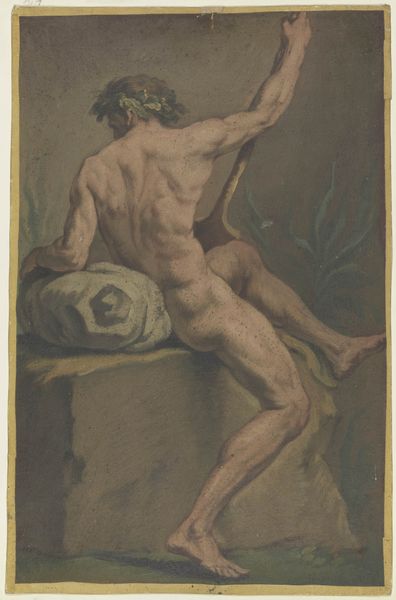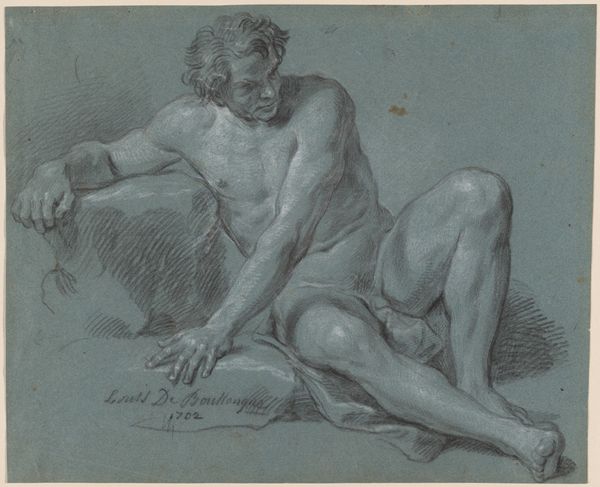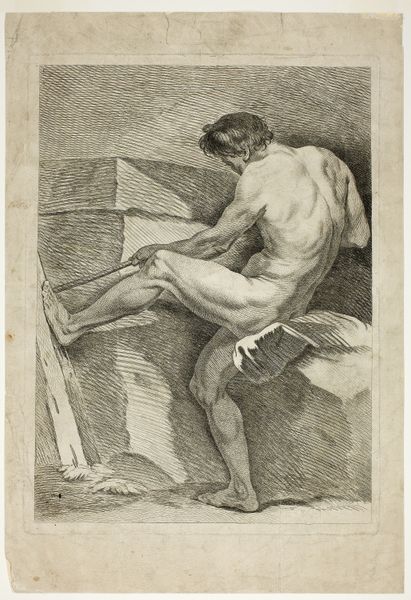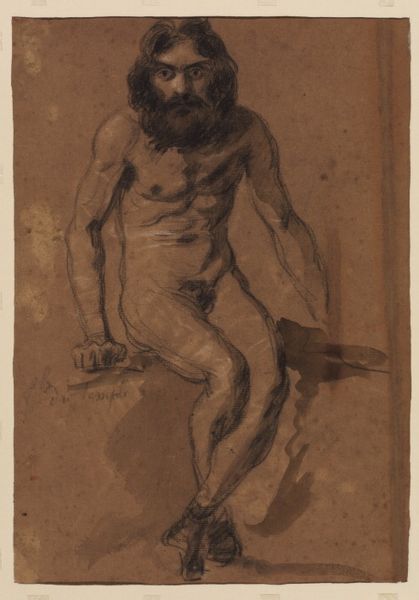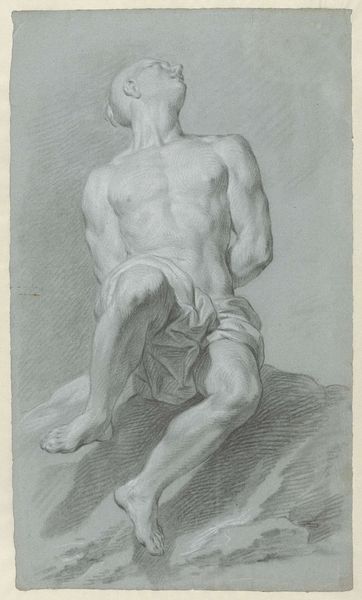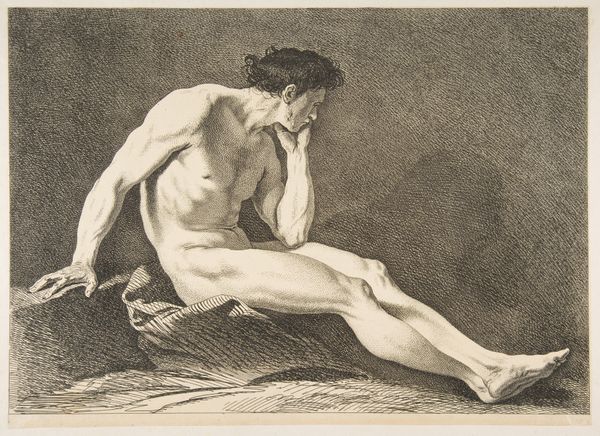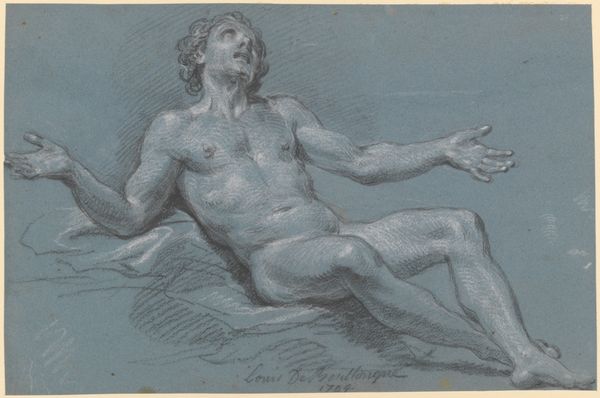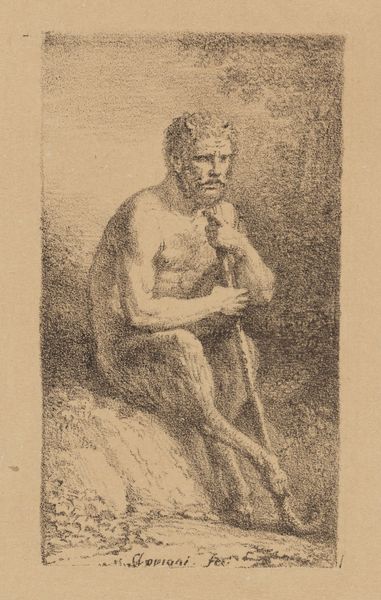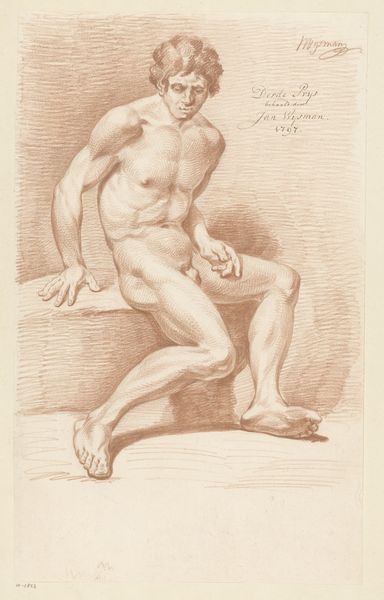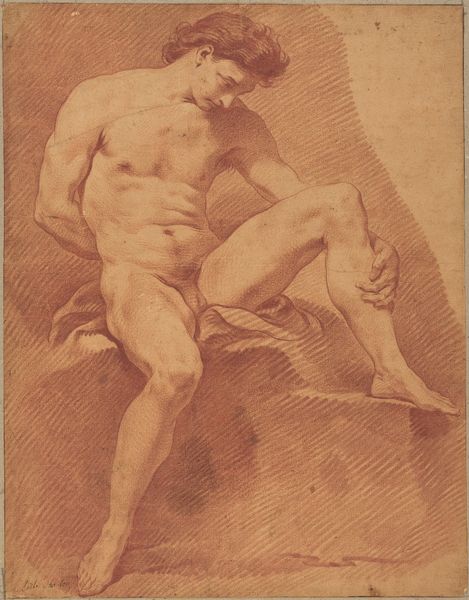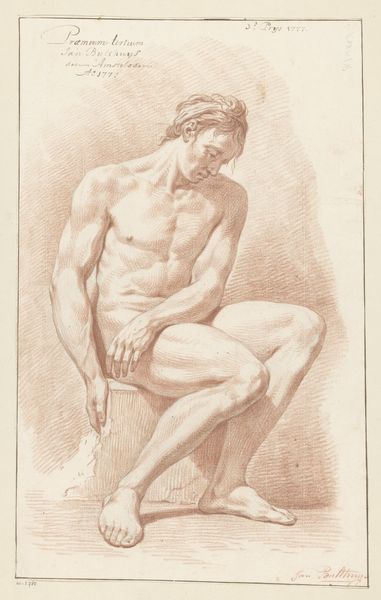
drawing, charcoal
#
portrait
#
drawing
#
baroque
#
charcoal drawing
#
figuration
#
charcoal art
#
oil painting
#
portrait drawing
#
charcoal
#
charcoal
#
nude
Copyright: Public Domain
Editor: We're looking at Josef Neher's "Akt eines auf einem Stein sitzenden Mannes, nach rechts blickend", a charcoal drawing held at the Städel Museum. The figure's musculature is impressive, especially rendered with such stark contrasts. How should we interpret the structure and tonal shifts here? Curator: Focusing on the formal elements, observe the use of chiaroscuro. Notice how the light falls selectively, emphasizing the anatomical structure, particularly the chest and thighs, whilst other areas dissolve into shadow. This creates a visual hierarchy. Do you see how the artist used line to define form? Editor: Yes, the outlines aren't sharp, but instead softened and blended, building the forms through layers of shading, creating volume. What does the semiotic reading convey to you? Curator: Indeed, the blending contributes to a sfumato effect, softening the contours. There's a structural contrast between the dynamism of the figure’s pose and the stasis of the stone. The line itself possesses agency in communicating movement and mass, though the piece stays grounded because of these stylistic, structural choices. Editor: So, would it be appropriate to describe Neher as experimenting with Baroque ideals within his draughtsmanship? Curator: One could argue Neher adopts baroque sensibility. This can be found in the sensuality of the human form and pronounced light and shadow contrast, but simultaneously rejects baroque art, notably in its classical simplicity and grounded dynamism. Where Baroque art can have the effect of theatrical flourish and drama, here we see reserved contemplation through structure. Editor: That is very insightful. Thank you! Curator: A careful consideration of visual structure is vital in approaching these pieces.
Comments
No comments
Be the first to comment and join the conversation on the ultimate creative platform.
